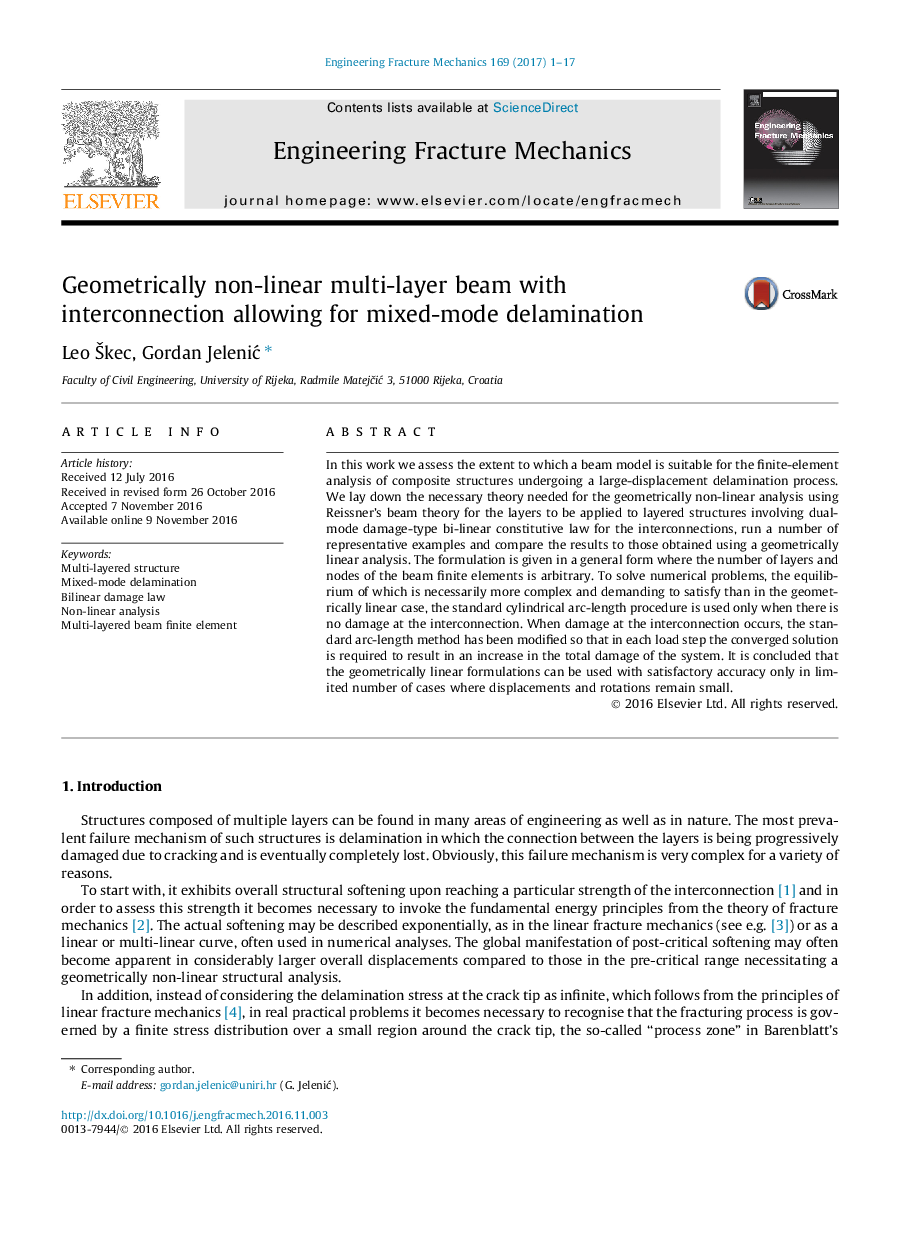| Article ID | Journal | Published Year | Pages | File Type |
|---|---|---|---|---|
| 5014123 | Engineering Fracture Mechanics | 2017 | 17 Pages |
â¢We consider multi-layer mixed-mode delamination using geometrically non-linear analysis.â¢We implement bi-linear damage constitutive relationship for the interfaces.â¢We model the problem using geometrically exact beam element formulation.â¢We propose a novel root selection procedure for the arc-length method.â¢Geometrically non-linear analysis may yield considerably different results in standard tests.
In this work we assess the extent to which a beam model is suitable for the finite-element analysis of composite structures undergoing a large-displacement delamination process. We lay down the necessary theory needed for the geometrically non-linear analysis using Reissner's beam theory for the layers to be applied to layered structures involving dual-mode damage-type bi-linear constitutive law for the interconnections, run a number of representative examples and compare the results to those obtained using a geometrically linear analysis. The formulation is given in a general form where the number of layers and nodes of the beam finite elements is arbitrary. To solve numerical problems, the equilibrium of which is necessarily more complex and demanding to satisfy than in the geometrically linear case, the standard cylindrical arc-length procedure is used only when there is no damage at the interconnection. When damage at the interconnection occurs, the standard arc-length method has been modified so that in each load step the converged solution is required to result in an increase in the total damage of the system. It is concluded that the geometrically linear formulations can be used with satisfactory accuracy only in limited number of cases where displacements and rotations remain small.
